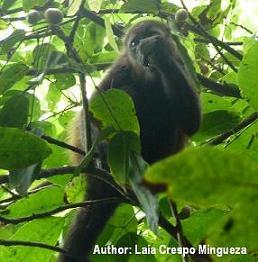Background
The term lateralized behaviour (i.e. behavioural asymmetries) refers to the presence of a bias, towards the use of a specific side, in an individual and/or a population when performing one particular behaviour (side preference and task specialization, respectively) or most behaviours (side specialization and “handedness”, respectively) (see table 1). In the past two decades, it has been found that behavioural asymmetries (e.g. preferential use of a limb) are a widespread phenomenon among vertebrates, including several primate species, and a variety of invertebrates.
The most conspicuous form of lateralized behaviour is human right-handedness. Around 80-90% of humans are right-handed for a variety of behaviours. However, the evolutionary origins of human handedness are still unknown. The study of lateralized behaviour in our closest relatives, the nonhuman primates, is therefore useful to clarify how this trait appeared and evolved in our species.
A lot of research has been done during the last three decades regarding primate lateralized behaviour, specially in captive populations of chimpanzees. However, in order to better understand the origin and evolution of lateralized behaviour in the Order Primates, more studies need to be carried out in other groups apart from the family Hominidae. Furthermore, research in free-ranging populations is specially important since spontaneously occurring behaviours and postures can be assessed in their natural context.
Table 1: To study lateralized behaviour, 4 technical terms have been proposed (adapted from McGrew and Marchant 1997).

Aims

The aims of the present study were:
1. To assess whether a population of free-ranging Mexican mantled howler monkeys (Alouatta palliata mexicana) shows lateralized behaviour at the individual and/or the population level for a variety of spontaneously occurring motor patterns.
2. To evaluate whether variables such as sex, age or posture affect the strength and direction of lateralized behaviour in this subspecies.
Responsible for this page:
Director of undergraduate studies Biology
Last updated:
06/30/15
